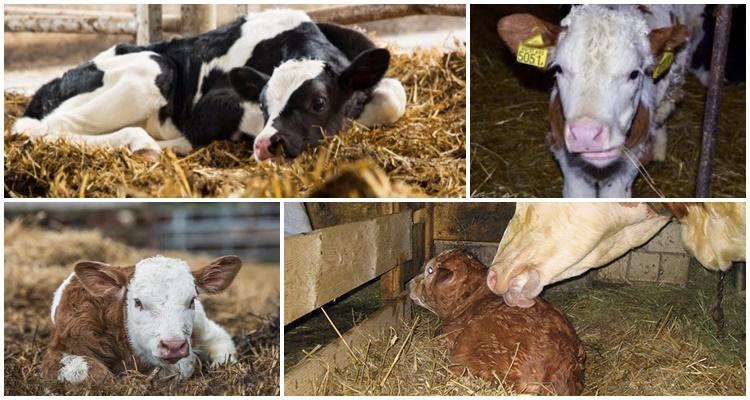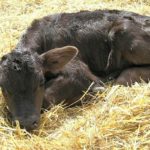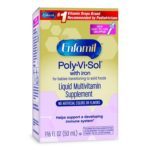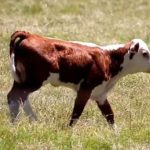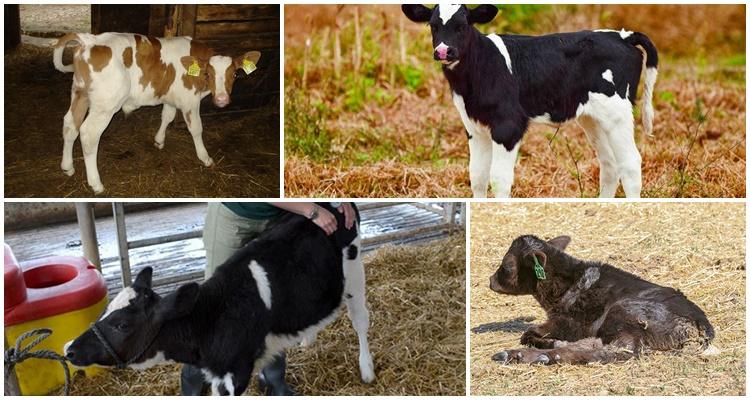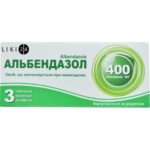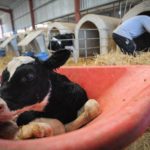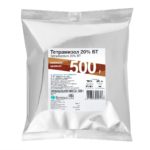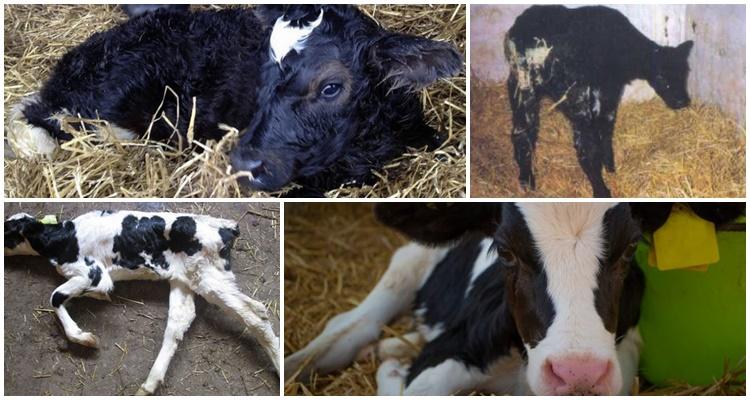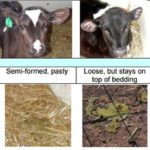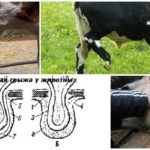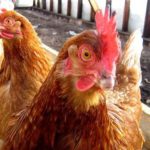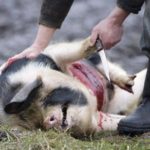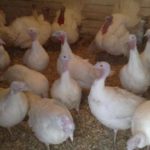Diarrhea in animals can be caused by various reasons. A calf has diarrhea with blood - what is the reason and how to treat it? This situation is familiar to every farmer. First of all, you need to understand that diarrhea is a sign of some kind of disease. Therefore, first of all, it is necessary to make a correct diagnosis. To increase your animal’s chances of recovery, it is recommended to seek help from specialists.
Causes of bloody diarrhea in calves
Various reasons can provoke the appearance of the disease: foreign objects entering the body, food poisoning, infectious diseases, helminthic infestations. It should also be taken into account that normal feed poisoning does not result in blood in the calf's feces. The problem may be that chemicals (nitrates, heavy metal salts) get into food.
Rotted hay is a common cause of poisoning, leading to the appearance of blood and mucus in the stool. The cause of the disease is mycotoxins - waste products of mold fungi. Moldy hay should not be fed to animals, even if there is nothing to replace it with. Fungi usually appear in compacted, poorly dried grass.
Danger of the problem
The appearance of diarrhea in calves, even without blood, is a dangerous symptom. The main danger of indigestion is dehydration. Blood impurities are a sign of damage to the mucous membrane of internal organs and intestines. Due to damage to the walls of blood vessels, the likelihood of bacterial flora entering the blood increases. As a result, the animal develops bacteremia and sepsis. If a bull has a weakened immune system, then after 35-48 hours the animal dies from septic shock.
There is also a danger of a foreign body entering the esophagus, since the main treatment option for the animal is surgical intervention. This is a rather expensive procedure, so it is only advisable in case of rescuing a breeding animal.
How to treat diarrhea in cattle
Since diarrhea is a symptom of the disease, it is initially important to make a correct diagnosis. Laboratory tests allow us to accurately understand the cause of mucosal damage. Treatment is prescribed after diagnosis.
Single case
If an illness occurs in one animal, you need to make sure that there are no foreign objects in the animal’s gastrointestinal tract. For such an examination you will need an X-ray machine or ultrasound device. It is easy to check a calf at a livestock complex equipped with similar equipment.
In private farms, emergency care can be provided to the animal, as in case of food poisoning: the calf is given a cleansing enema, medications that promote blood clotting are prescribed (ascorbic acid, etamsylate, vikasol).
To replenish fluid loss, the bull is given salted water and rehydration medicine “Polyvisol” to drink.
Poisoning
If any toxic substances get into food, it is important to promptly provide first veterinary aid. In order to choose the right medications, it is necessary to establish the source of poisoning. Next, a set of activities is carried out:
- if the disease occurs in many calves and cows at the same time, then poor quality feed may be the cause of diarrhea. Therefore, feeders are cleared of feed and hay;
- animals are given sorbents (Smecta, activated carbon, enterosorbent B) to remove harmful substances from the body;
- since cleansing enemas are contraindicated in cases of intestinal damage, it is recommended to perform gastric lavage;
- the introduction of saline solution, laxatives and diuretics will accelerate the removal of toxic substances from the animal’s body;
- Potassium carbonate is prescribed for accidental poisoning with chemicals.
General therapy (injections, drips) will help strengthen the calves’ immunity, improve metabolism, and support the functioning of both the respiratory and cardiovascular systems. But it is recommended to have the animal’s water, food, and feces tested in order to accurately determine the cause of poisoning.
Helminths
Worms, entering the animal's body, spread in the intestines and lungs, blocking the respiratory passages. An increase in body temperature, bloody stools, and refusal to feed are symptoms of helminth damage to the body.
By filling the calf’s body, parasites provoke inflammatory processes in cells and contribute to the structural destruction of organs.
If treatment at home is not started promptly, the likelihood of death for the calf increases. Several medications are used in therapy:
- "Alvet" - the drug suppresses the development of helminths at an early stage and is well tolerated by animals;
- "Albendazole" - the medicine is available in the form of a suspension, reliably destroys parasites. The advantage is that the medicine has low toxicity to the calf’s body;
- “Tetramizole” – the effect is observed within a day after application. The medication is characterized by rapid absorption by organ tissues and a long-lasting therapeutic effect.
Treatment of helminthic infestation is carried out under the supervision of a veterinarian, since the animal is at risk of drug intolerance.
Salmonellosis
The disease affects young animals 1-2 months old. Clinical symptoms: high body temperature, thirst, pneumonia, conjunctivitis. If the calf poops blood, it means the disease has reached an advanced stage. Laboratories examine the blood and feces of sick animals.
The basis of treatment is injections of polyvalent antitoxic serum.Animals are administered intramuscularly or intravenously with 5-10 ml of the drug for 7-10 days. It is recommended to divide the daily dose into three injections (injections are given at intervals of 4 hours). The formol alum vaccine has proven itself well (injections are given only subcutaneously).
Prevention measures
When the first signs of diarrhea appear, it is important to determine the source of the disease. Since preventing a disease is easier than treating it, preventive measures are given great importance:
- feed is prepared and stored according to established technology, constantly monitoring quality;
- the technology for preparing silage and mixed feed must not be violated;
- The condition of reservoirs and pastures is constantly monitored. Grazing areas are periodically checked for the presence of foreign objects;
- Animals' diets are supplemented with vitamin and mineral supplements to prevent them from eating harmful and dangerous plants and substances.
At future grazing sites, the composition of the flora is checked to prevent poisoning by poisonous plants. Deworming is carried out periodically. The areas where the herd is kept are regularly cleaned and disinfected.
Diarrhea is a common disease in young animals. However, bloody diarrhea in a calf is an unusual phenomenon. You need to react quickly, as delay can lead to the death of the animal. Identifying the cause and properly prescribing treatment will increase the chances of recovery.

